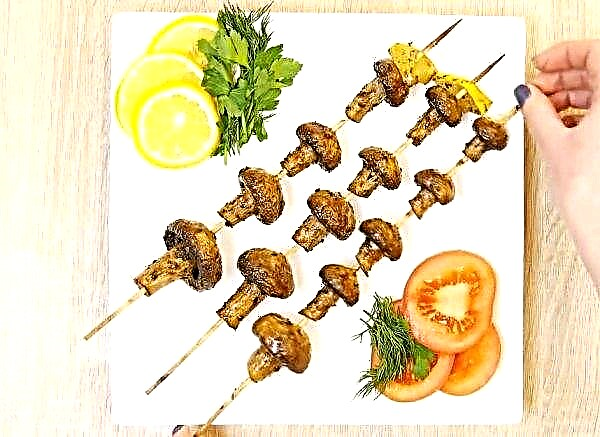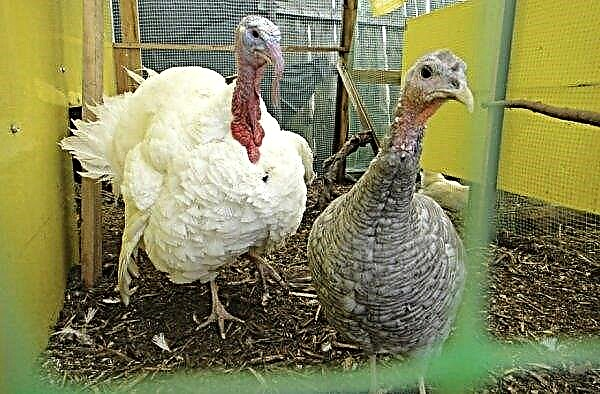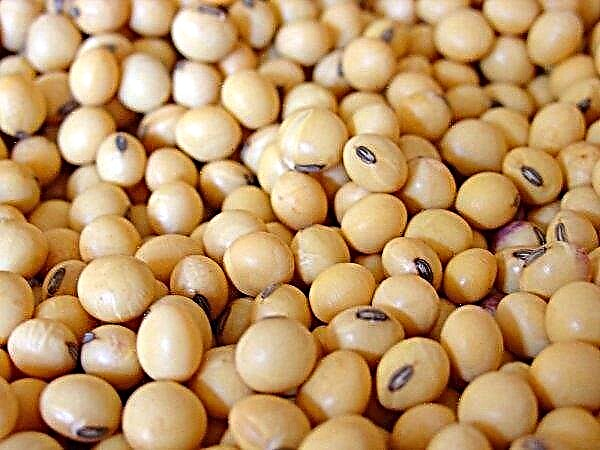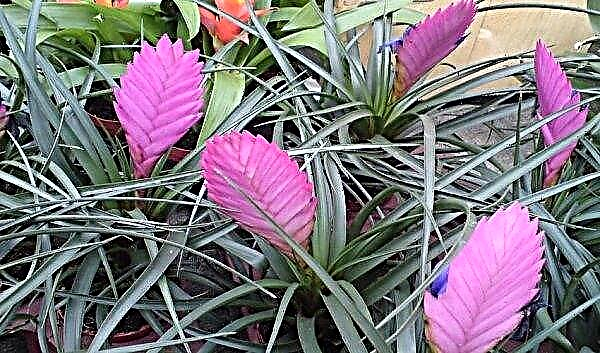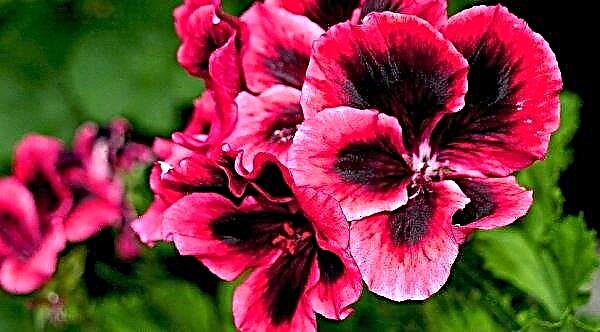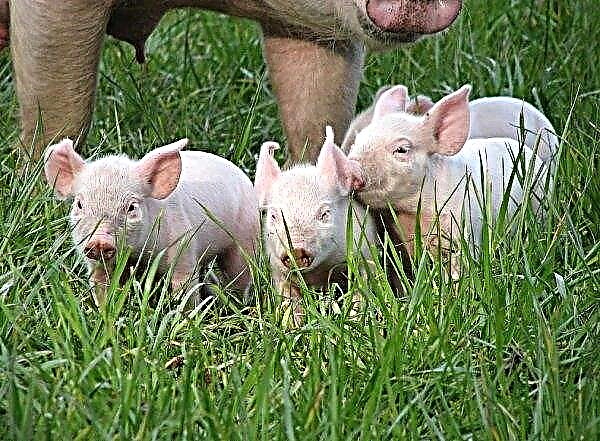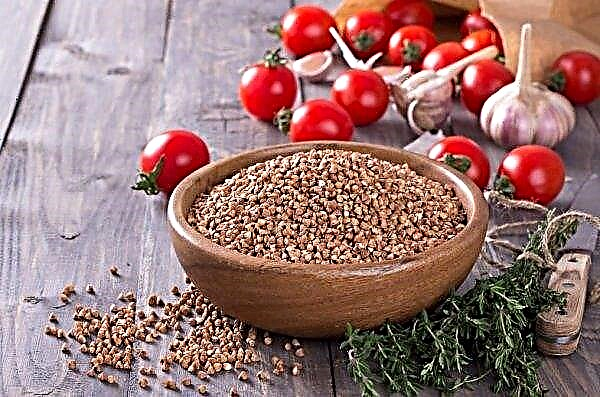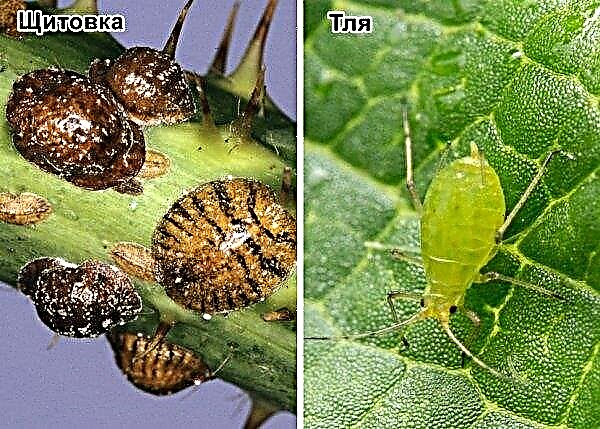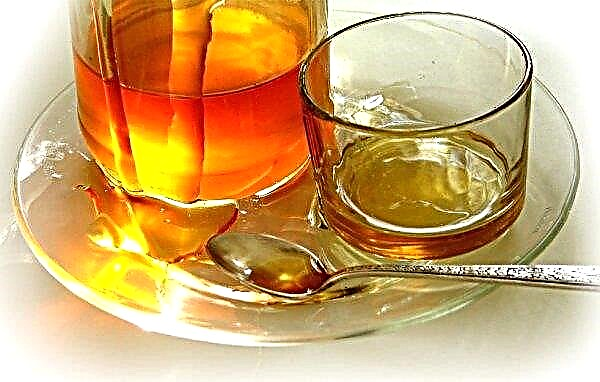Guzmania Minor Rondo start exotic lovers. This is a bright plant that has an unusual feature - flowering. About what is remarkable in the flower and how to grow it, read on in the article.
Botanical description of the plant
Guzmania (or gusmania) belongs to the genus Bromeliad. The plant is epiphytic, in its natural form grows in the South and Central American tropics. Some species of guzmania, in particular, Minor Rondo, are grown as house flowers.
Did you know? The flower was first discovered and described by the botanist Anastasio Guzman in 1802. Gusmania was named in his honor.
Guzmania Minor Rondo in room conditions grows to 20 cm in height. The leaves are green or red, elongated, 2-3 cm wide. The leaves make up a recessed rosette. Bracts are yellow or red, are straight or spreading.
Flowers can be red, yellow or orange. Gusmania Minor Rondo blooms once in a lifetime. Typically, the bud opens 3 years after purchase. The flower lasts for 4-6 months. After flowering, the bud withers, and the plant dies.
Optimal conditions for growing a house
The climate is important for guzmania. The flower will grow well only at optimal temperature, humidity and lighting.
Location and Lighting
The plant requires bright diffused light. To provide the required level of lighting, move the pot with the plant to a more illuminated place depending on the season. Do not be afraid to rearrange the flowerpot - unlike the same ficus, guzmania is not afraid of movements.
From March to September, it is better to keep the flowerpot on the windowsill near the east window. So the leaves will not scorch direct sunlight, but there will be enough lighting.
In October, when daylight becomes short, move the flower to the windowsill near the south window. Here the pot should be until the end of February. In late autumn and winter, the southern sun will not be able to burn the leaves. Along with this, the plant will receive the right amount of sunlight.Did you know? According to signs, guzmania personifies male power and prolongs the life of male households.
Temperature and humidity
Guzmania is quite whimsical to indicators of temperature and humidity. The optimum temperature is + 20 ° C during flowering and + 25 ° C during growth. The limiting indicators of heat and cold are + 27 ° С and + 13 ° С, respectively. Keep humidity within 60–80%.
Features of home care
The owner of guzmania should take care of the care of the plant. Watering, fertilizing, pruning and replanting is extremely important for the flower.
Watering
The plant is watered as follows:
- irrigate the substrate from a watering can;
- pour water into the outlet;
- spray the leaves.
Water for irrigation should be:
- room temperature;
- settled or rain;
- soft.
Fertilizer application
From the beginning of spring to the end of summer, feed the flower with a water-soluble fertilizer for decorative flowering plants. Florists are advised to reduce the dosage of fertilizing for guzmania to half the amount prescribed according to the instructions. The frequency of deposits during the growth period is every month. When the flower blooms, feed the plant more often, 1 time in 10 days. First of all, you need to feed the substrate. Fertilizer should also be poured into the outlet. For best nutrition, spray the leaves.
Important! Do not use top dressing with boron and copper in the composition - these substances act on the plant as poison.
Pruning
Pruning as the formation of a bush of guzmania Minor Rondo is not needed. Only damaged leaves should be removed. Also cut dry or wilted parts of the plant with a knife or secateurs. Slices are processed with crushed activated carbon.
Transfer
Carry out the first transplant immediately after purchase. The store substrate is usually not suitable for the flower.
In the future, transplant the plant no more than 1 time in 3 years. The plant does not live long, often 2-3 years, so sometimes it is not necessary to transplant it. If the flower turned out to be a long-liver, then it is better to transplant it in the spring.
Guzmania well perceives a universal substrate for bromeliads.
You can also prepare the soil mixture yourself by mixing:
- 0.5 parts of sand;
- 1 part sphagnum;
- 1 part of turf;
- 2 parts of peat.
- 1 part of sheet soil;
- 1 part of coniferous bark;
- 0.5 parts of sand;
- 0.5 parts of sphagnum.
Transplant as follows:
- Put drainage of expanded clay or small pebbles at the bottom of the new pot.
- Fill the container halfway with substrate.
- Carefully remove the guzmania from the old container.
- Move the flower to a new pot, spreading the roots.
- Pour the remainder of the substrate.
Propagation at home
Florists propagate the plant in two ways: dividing the bush or seeds.

Division of the bush (lateral processes)
The division of the bush is also called the jigging of the lateral processes. The method is convenient at the end of the plant's life when guzmania fades. The mother flower dies, but leaves behind the lateral processes. Each process has its own root system, so they are quite viable.
Divide the bush in this way:Important! The lateral processes grow roots at the same time. Plant them as the root system grows.
- Fill the small pots with a suitable substrate.
- Use a sharp knife to cut the lateral processes with roots.
- Seed the shoots in pots.
- Cover the containers with a film and place in conditions +26 ... + 28 ° С.
- Moisten the soil periodically and ventilate the flower.
- When guzmania grows, remove the film and provide standard conditions.
Video: How to separate the children of Guzmania
Seeds
Guzmania seeds rarely propagated. After sowing, not all grains germinate, so this method is very time-consuming and time-consuming. The method is more suitable for professionals.
The breeding process is as follows:
- Fill the pot with a mixture of peat and sand in equal amounts.
- Process the seeds with potassium permanganate and let them dry.
- Spread the seeds on a substrate.
- Cover the pot with plastic wrap or glass.
- Provide crops with bright diffused light and temperature of +23 ... + 24 ° С.
- Watch the substrate - when it dries, remove the cover and moisten the crops from the spray gun. After 2-3 weeks, sprouts will appear.
- After 2 months, dive the seedlings into separate cups. For diving, you need a mixture of their peat, leaf and turf land in the proportions of 4: 2: 1.
- Continue to water seedlings regularly.
- After 6 months, transplant the plants into containers with a diameter of 10-12 cm and standard for bromeliad substrate.
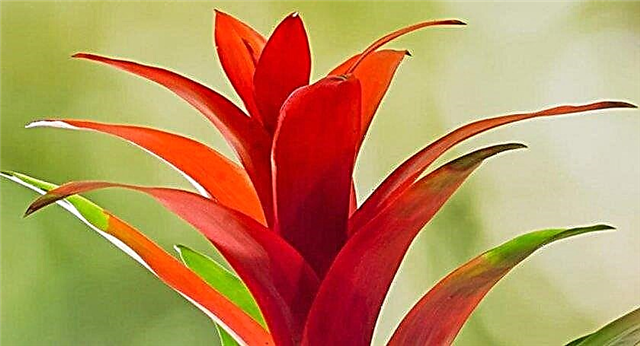
Growing difficulties
Guzmania Minor Rondo is keenly reacting to improper care. If you breach the rules of cultivation, the following problems are possible:
| Problem | Cause |
| Root decay | Heavy watering |
| Brown spots on the leaves | Direct rays of the sun |
| Brown leaf tips | Dry air, insufficient watering, hard water |
| The flower does not let the lateral processes | Not enough fertilizer |
| Leaves are soft and lethargic. | Low room temperature |
You can get rid of the above symptoms by changing the growing conditions.
Of the diseases, the most common are fungal. Most often they arise from excessive watering and excessive humidity. At the first sign of fungus, cut off the affected parts. Next, treat the flower with a fungicide, for example, Oxychom or Fundazole.
Pests can also appear on the plant. In guzmania, most often you can find:
- red spider mite;
- mealybug;
- bromeliad shield.
With proper cultivation of guzmania, Minor Rondo will surely please the owner with a beautiful and long flowering. And if the florist studies the recommendations for reproduction, he will be able to extend the life of the flower by replanting the lateral processes.


